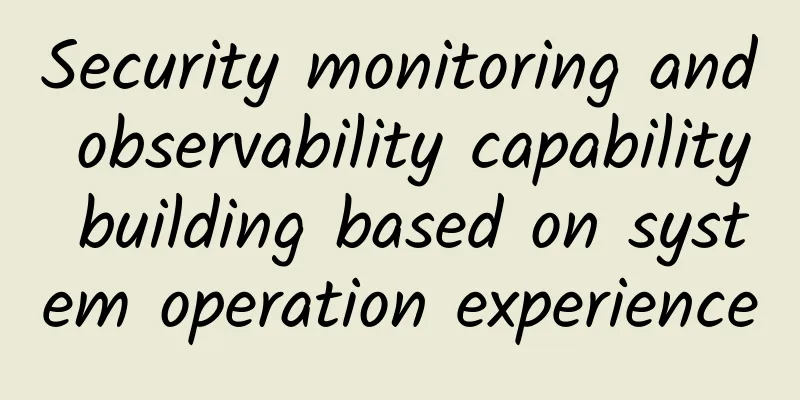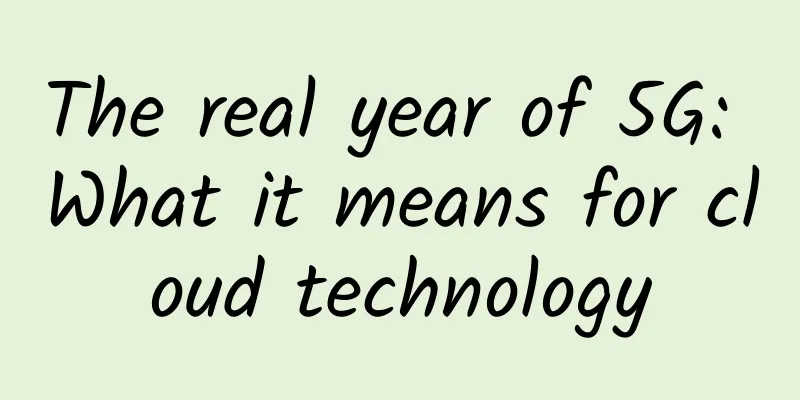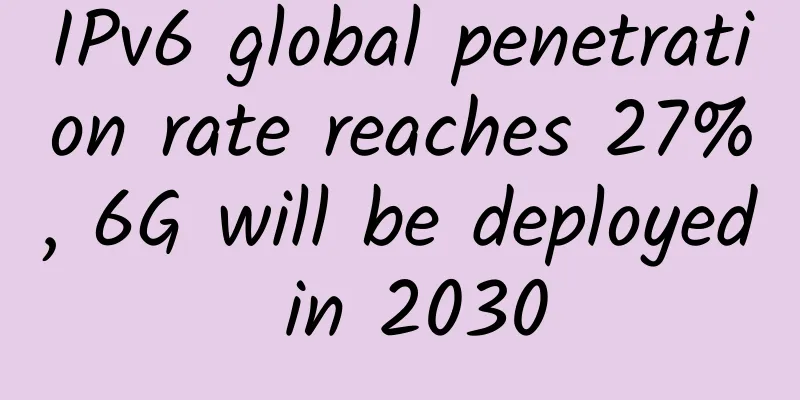When WiFi6 collides with 5G, is it a crisis or a business opportunity?

|
September 16, 2019 WiFi Alliance announces WiFi6 certification program my country’s 5G licenses were issued as early as June this year. 2019 is the first year of commercial use of 5G and WiFi6. Both have been quite popular recently. Many people are even arguing that WiFi6 and 5G will collide head-on in the future and WiFi6 will gradually be eliminated. However, many people believe that WiFi6 and 5G are competing with each other, but they can also be perfectly integrated and coexist and complement each other.
What is WiFi 6? The original name (and standard code) of WiFi6 is 802.11ax, which is the sixth-generation technological achievement of WiFi. There is no doubt that compared with previous generations of WiFi, its technology will be more advanced and more "6". WiFi6 will provide faster speed, higher throughput, larger coverage area, better security, and lower latency and other performance, bringing users a better and smoother experience. The following are the features of WiFi6:
Data source: collected and sorted from the Internet The intersection of 5G and WiFi6 2019 is not only the year of 5G trial commercialization, but also the first year of WiFi6 commercialization. WiFi6 and 5G, the two brothers in distress, are currently only in the popularization stage. There are only a few 5G mobile phones, WiFi6 routers and terminal devices that support WiFi6 and are relatively expensive. However, as they become more popular, I believe their prices will gradually drop soon. With the continuous development of WiFi6 and 5G There are more and more intersections and collisions in various fields. For example, at MWC on February 16 this year, Qualcomm launched the automotive WiFi6 chip QCA6696, which can supplement its Snapdragon automotive 4G and 5G platforms; on August 22, Qualcomm released a new WiFi communication chip compatible with WiFi6 technology, and said it plans to integrate WiFi6 and wireless network 5G chips into one. In early July, Shenzhen Metro, China Unicom, Huawei and other corporate partners announced that Futian Hub became the first subway station in the country to apply WiFi6 technology. It uses China Unicom 5G network access, realizing the perfect combination of WiFi6 and 5G. In the future, with the strengthening of WiFi6 and 5G technologies, there will be more chemical reactions between the two. 5G is unlikely to replace WiFi6 Compared with 5G, WiFi6 also has its advantages. From the perspective of indoor coverage, 5G networks use higher-frequency millimeter waves and higher C-Band and require the construction of many base stations. In addition, as residents are more aware of environmental protection, it is difficult to build base stations near residential areas. This means that 5G has worse wall penetration than 4G and it is more difficult to receive signals indoors. WiFi6 installed indoors makes up for the shortcomings of 5G networks. 5G is mainly used outside and WiFi6 is mainly used inside, which is a perfect match. With the advent of the era of the Internet of Things, more places need to use data. From the cost perspective, if the 5G data package is charged by volume, the more data consumed, the higher the cost. If charged by speed, users who want higher speeds will also need to pay higher fees. Therefore, if the total is calculated per household, it is more cost-effective to use WiFi. From the perspective of network capacity, if 5G base stations carry too many terminal devices, they will be overloaded, and the use of WiFi can share the pressure of 5G base stations. In terms of connection, many terminal designs now do not support the insertion of SIM cards or ESIM cards, and need to be connected via WiFi. WiFi6, which has faster network speed and better quality than before, still has irreplaceable value. For home networks, WiFi6 will still be the best choice for the next few years until better technological innovations emerge. Source: Collected from the Internet 5G and WiFi6 coexist WiFi6 and 5G are not in a fight to the death. Coexistence and complementarity are the best state. After all, for users, no matter who you are, the most important thing is that it is useful, easy to use and affordable. WiFi6 and 5G both have their advantages and disadvantages. Based on the current situation, it will be difficult for 5G to achieve unified charging, unlimited speed, sufficient base stations and uncongested network for a long time. WiFi6 can effectively divert traffic for operators' networks. In the future era of high-traffic Internet of Things, WiFi will be able to bear large traffic consumption at a fixed fee, which can save users a lot of mobile traffic costs; when you go outdoors, it is difficult for independent WiFi to maintain the continuity of its connection, so mobile networks are indispensable. 5G network is suitable for open, mobile and dense device connections, while WiFi is suitable for home networks and enterprises with high privacy, so 5G is mainly used for external use and WiFi6 is mainly used for internal use, which is still a perfect combination and complementarity. Therefore, WiFi6 and 5G should develop on the path of common progress, mutual complementation and mutual integration. WiFi6 and 5G are providing enhanced mobile broadband through augmented and virtual reality. In the future, both WiFi6 and 5G can bring deeper value by leveraging their advantages in more industries, such as smart home, Internet of Vehicles, education, agriculture, industry and other fields. WiFi 6 will continue Helping telecom operators increase revenue and reduce costs For users, if WiFi6 can maximize the high-performance technology in applications, it will bring users a better network experience than ever before, which will be much more attractive to users than before; judging from the current trend, 5G package charges are not very low, and the package settings will be divided into multiple levels according to traffic or speed, so for home users, using WiFi to bear most of the daily traffic and reduce 5G traffic consumption expenses is still a good choice. As a result, users' demand for WiFi will increase, which means that the demand for broadband services will also increase. For operators, setting up 5G mobile + fixed-line broadband converged packages can not only bring high-value users to telecom operators, but also strengthen the bundling of users, which can be regarded as the "open source" path for telecom operators. Continuing to use WiFi6 to share the burden of 5G communication networks can reduce the cost of 5G base station construction. WiFi6 still has many possible business opportunities in terms of functions and applications to be "developed". If telecom operators spend some time and energy to explore them, they may be able to use 5G and WiFi6 to create a greater win-win situation. WiFi6 applications and development opportunities WiFi6 will have great potential and business opportunities. At present, WiFi6 has been widely used in thousands of universities. For example, Harbin Institute of Technology uses WiFi 6 new technology to achieve high-density tiered classroom 10G wireless access rate, which greatly improves the teaching experience of teachers and students; Northeast Normal University has built a full-coverage wireless campus network that supports video conferencing, wireless voice, wireless monitoring and other applications, and uses WiFi6 wireless AP technology to increase the office network rate by 30%. In the future, WiFi6 will help smart home connections. Various smart home products such as smart air conditioners and refrigerators, smart monitoring, smart lights, smart curtains, etc. will be installed in every corner of the house and consume a certain amount of traffic. The high-quality WiFi6 is the best choice for home network connections. In dense commercial environments, WiFi6 can provide more stable and higher-speed network use. In enterprise and factory operations, WiFi6 can support more terminals at the same time and provide a safe, stable, fast transmission rate, and cost-effective network experience. The applications and business opportunities of WiFi6 are far more than these, and its more potential is still being explored. In the next few years, it will work with 5G to create a better network environment and support more equipment development and innovation. |
<<: Detailed explanation of TCP packet sticking, packet unpacking and communication protocol
>>: Do you really understand the network layer model?
Recommend
Five-minute technical talk | A brief discussion on WebSocket protocol-RFC 6455
01 Introduction WebSocket is a network communicat...
SD-WAN brings new security challenges
Security is one of the top concerns for organizat...
Playing with Bitcoin = playing with fire? This is what the heads of major central banks think
As Bitcoin becomes more and more popular around t...
GSMA: China is expected to have 460 million 5G connections by the end of 2025
Recently, GSMA released its latest report "C...
5G phones have been available for three years. Why is 5G in the United States so slow? Three major problems remain unsolved
Since the advent of 5G technology, U.S. wireless ...
18 pictures tell you: 10 key technical points that a 90-point network engineer should master
"As a network engineer, what does it take to...
Can the United States' 6G layout surpass 5G and surpass my country?
At the 2019 Mobile World Congress, Huawei brought...
In-depth analysis of SDN switch configuration and application issues
SDN (Software Defined Networking) is an emerging ...
CloudCone: $10.99/year KVM-512MB/20GB/2TB/Los Angeles data center
CloudCone has re-launched the Hashtag 2023 series...
Different Types of Network Cables and Their Uses
In today's connected world, network cables pl...
A brief history of computer networks
The development of computer networks has come a l...
Five elements for building a private 5G network
We know the “voice and text messaging” capabiliti...
Shandong issues six standards for e-government cloud platform construction
Recently, Shandong issued six standards in the fi...
Don’t worry anymore! Teach you how to quickly locate Eth-Trunk faults and easily solve network problems!
1. How to locate the problem that an Eth-Trunk in...
Industrial Internet + 5G, we must plan carefully before taking action
In the previous article, "IoT operating syst...









